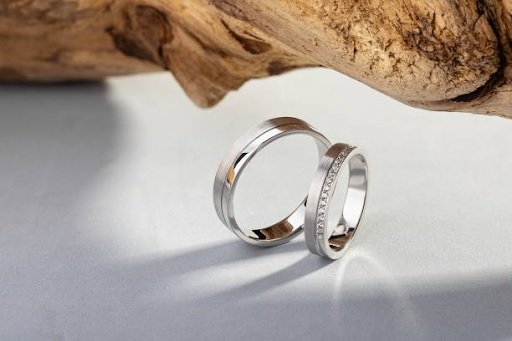The tradition of exchanging engagement rings is as old as love itself, symbolizing the eternal commitment between two people. However, in today’s world, where ethical and environmental concerns hold significant weight, lab-grown engagement rings have emerged as a sparkling revolution. These exquisite pieces of jewelry offer not only a brilliant and ethically sourced alternative to traditional diamonds but also contribute to a more sustainable and responsible future. In this article, we will explore the beauty, benefits, and environmental impact of lab grown engagement rings.
The Birth of Lab-Grown Diamonds
Lab-grown diamonds, also known as synthetic or cultured diamonds, are not to be confused with diamond simulants like cubic zirconia or moissanite. Lab-grown diamonds are chemically, physically, and optically identical to their natural counterparts, with the same hardness, brilliance, and fire. The primary difference lies in their origin.
These diamonds are created in controlled laboratory environments using cutting-edge technology that replicates the conditions deep within the Earth’s mantle where natural diamonds form. The process involves either High-Pressure High-Temperature (HPHT) or Chemical Vapor Deposition (CVD) methods, both of which result in the formation of genuine diamonds over a matter of weeks or months, rather than millions of years.
The Beauty of Lab-Grown Diamonds
Lab-grown diamonds are nothing short of exquisite. They exhibit the same fire, scintillation, and brilliance as natural diamonds, making them indistinguishable to the naked eye. Just like their natural counterparts, lab-grown diamonds come in a variety of shapes, sizes, and qualities, allowing couples to choose the perfect stone for their engagement ring.
These diamonds are graded using the same 4Cs criteria – Cut, Carat, Clarity, and Color – as natural diamonds, ensuring a wide range of options to suit different preferences and budgets. Whether you desire a classic round-cut diamond or a fancy colored stone, lab-grown diamonds offer a dazzling array of choices.
Ethical Advantages of Lab-Grown Engagement Rings
Conflict-Free: One of the most significant ethical advantages of lab-grown diamonds is their conflict-free status. Unlike natural diamonds, which have a history tainted by conflict and exploitation, lab-grown diamonds are entirely free from any association with blood diamonds, also known as “conflict diamonds.”
Ethical Mining Practices: Traditional diamond mining can have devastating environmental and social consequences, including habitat destruction and human rights abuses. By choosing lab-grown engagement rings, you’re supporting an industry that is focused on ethical and responsible practices.
Transparency: Lab-grown diamonds come with a higher degree of transparency. Each diamond can be traced back to its source, ensuring that it was created in a responsible and sustainable manner.
Reduced Carbon Footprint: The process of growing diamonds in a lab typically has a significantly lower carbon footprint compared to mining natural diamonds, which involves energy-intensive and environmentally damaging practices.
Environmental Benefits of Lab-Grown Engagement Rings
Conservation of Natural Resources: Traditional diamond mining requires large-scale excavation and can consume vast amounts of water. Lab-grown diamonds, on the other hand, have a significantly smaller environmental impact, conserving precious resources.
Reduced Habitat Disruption: Mining for natural diamonds often involves clearing vast areas of land, disrupting ecosystems and habitats. Lab-grown diamonds eliminate the need for such destructive practices.
Lower Energy Consumption: The energy-intensive process of mining, transporting, and cutting natural diamonds results in high greenhouse gas emissions. Lab-grown diamonds, created in controlled environments, consume less energy and contribute to a reduced carbon footprint.
Fewer Chemicals and Toxins: Diamond mining often involves the use of hazardous chemicals, which can contaminate soil and water sources. Lab-grown diamonds are produced with fewer harmful chemicals and are therefore less likely to contribute to environmental pollution.
The Price Advantage of Lab-Grown Diamonds
Lab-grown diamonds typically offer a price advantage compared to their natural counterparts. The cost of mining, transportation, and the inherent rarity of natural diamonds contribute to their higher price tag. Lab-grown diamonds, on the other hand, are more accessible without compromising on quality or beauty. This price advantage allows couples to invest in a larger or higher-quality diamond for their engagement ring.
The Future of Sustainable Luxury
Lab-grown engagement rings represent a shift in the jewelry industry towards sustainability and ethical responsibility. As consumers become more conscious of their environmental footprint and the impact of their choices, lab-grown diamonds are gaining popularity for their transparent and eco-friendly attributes.
The market for lab-grown diamonds is growing steadily, and many established jewelry brands are now offering collections featuring these ethically sourced gems. This shift towards sustainable luxury not only meets the demands of conscious consumers but also aligns with the values of a more environmentally aware society.
Dispelling Common Myths About Lab-Grown Diamonds
Quality: Some people mistakenly believe that lab-grown diamonds are of lower quality than natural diamonds. In reality, lab-grown diamonds are virtually identical to natural diamonds in terms of quality, hardness, and brilliance.
Size and Variety: Lab-grown diamonds come in a wide range of sizes, shapes, and qualities, just like natural diamonds. Whether you prefer a classic round-cut or a unique fancy shape, you can find the perfect lab-grown diamond for your engagement ring.
Resale Value: While it’s true that natural diamonds may have a historical resale market, lab-grown diamonds are still relatively new to the market. However, their value is likely to appreciate as more consumers recognize their ethical and environmental advantages.
Sentimental Value: Lab-grown diamonds can hold the same sentimental value as natural diamonds, as they symbolize love and commitment. What truly matters is the meaning and emotion behind the ring, regardless of the diamond’s origin.
Conclusion
Lab-grown engagement rings represent a sparkling revolution in love and sustainability. These ethically sourced and environmentally responsible diamonds offer a stunning alternative to traditional, mined diamonds without compromising on quality or beauty. By choosing lab-grown engagement rings, you not only celebrate your love but also contribute to a more ethical and sustainable future for our planet. In a world where conscious consumer choices matter, lab-grown engagement rings shine as a brilliant symbol of love and responsibility.
